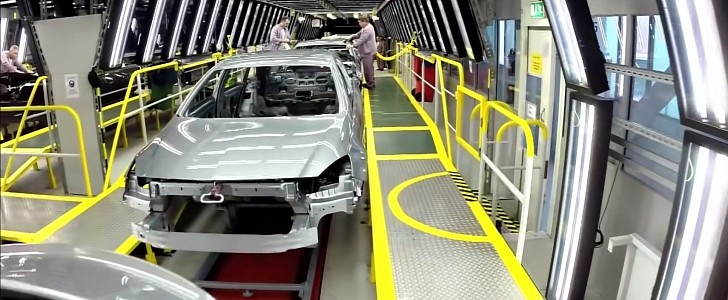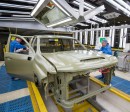The industry-wide chip crisis is spelling doom for many automakers around the world with supply chain issues, production cuts, and temporary shutdowns. The elusive semiconductor is slowly paralyzing the automotive industry. But there's some hope. Industry insiders are optimistic the storm will calm down in a couple of months. But they could be wrong.
There's a raging crisis in Ukraine, and as the world struggles to get things back to normal on that side of the world, a second wave of problems might be brewing.
The automotive world depends a lot on Russia. It is a highly resourceful region, producing several critical metals vital in automotive manufacturing, including nickel and palladium. Additionally, it's a manufacturing base for several leading automakers, including Volkswagen, Toyota, and Stellantis.
On the other hand, according to NBC News, a quarter of the parts used in Russian-made automobiles come from abroad, including some made in the United States.
South Africa and Zimbabwe produce a significant amount of palladium. However, current forecasts indicated a price hike of up to $800 an ounce between mid-December and Wednesday.
Nickel is also available in Indonesia and the Philippines and is vital for battery production could also face constraints. The UK and U.S. all have targets to increase electric vehicle production by 2030, with the UK halting production of ICEs raising the demand for the metal.
That's not all. Oil prices hit an eight-year high this week due to geopolitical tensions. The Eastern European country accounts for about 12% of crude oil exports, likely affecting pump prices globally. According to economic experts, international sanctions or export controls could worsen the industry-wide chip shortage.
In January, the average price of a new vehicle in the U.S. was $45,000. With another manufacturing crisis, it could shoot higher. It's not clear if automakers will swallow the added costs on production, but if the semiconductor crisis taught us anything, consumers' wallets would be hard hit.
The automotive world depends a lot on Russia. It is a highly resourceful region, producing several critical metals vital in automotive manufacturing, including nickel and palladium. Additionally, it's a manufacturing base for several leading automakers, including Volkswagen, Toyota, and Stellantis.
On the other hand, according to NBC News, a quarter of the parts used in Russian-made automobiles come from abroad, including some made in the United States.
South Africa and Zimbabwe produce a significant amount of palladium. However, current forecasts indicated a price hike of up to $800 an ounce between mid-December and Wednesday.
Nickel is also available in Indonesia and the Philippines and is vital for battery production could also face constraints. The UK and U.S. all have targets to increase electric vehicle production by 2030, with the UK halting production of ICEs raising the demand for the metal.
That's not all. Oil prices hit an eight-year high this week due to geopolitical tensions. The Eastern European country accounts for about 12% of crude oil exports, likely affecting pump prices globally. According to economic experts, international sanctions or export controls could worsen the industry-wide chip shortage.
In January, the average price of a new vehicle in the U.S. was $45,000. With another manufacturing crisis, it could shoot higher. It's not clear if automakers will swallow the added costs on production, but if the semiconductor crisis taught us anything, consumers' wallets would be hard hit.






